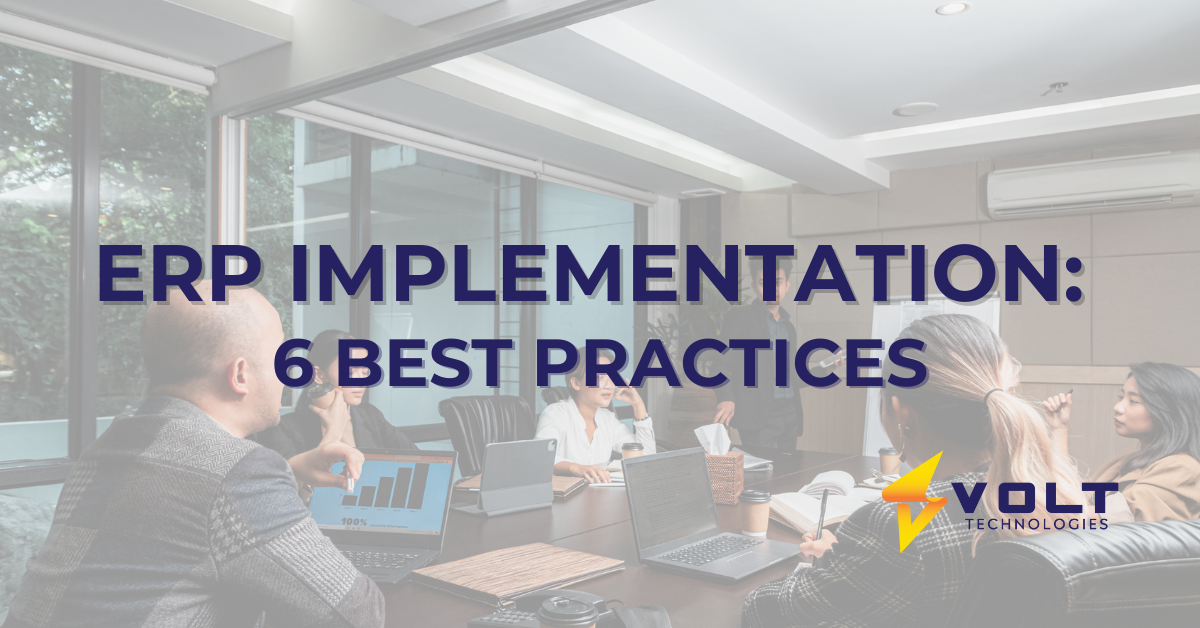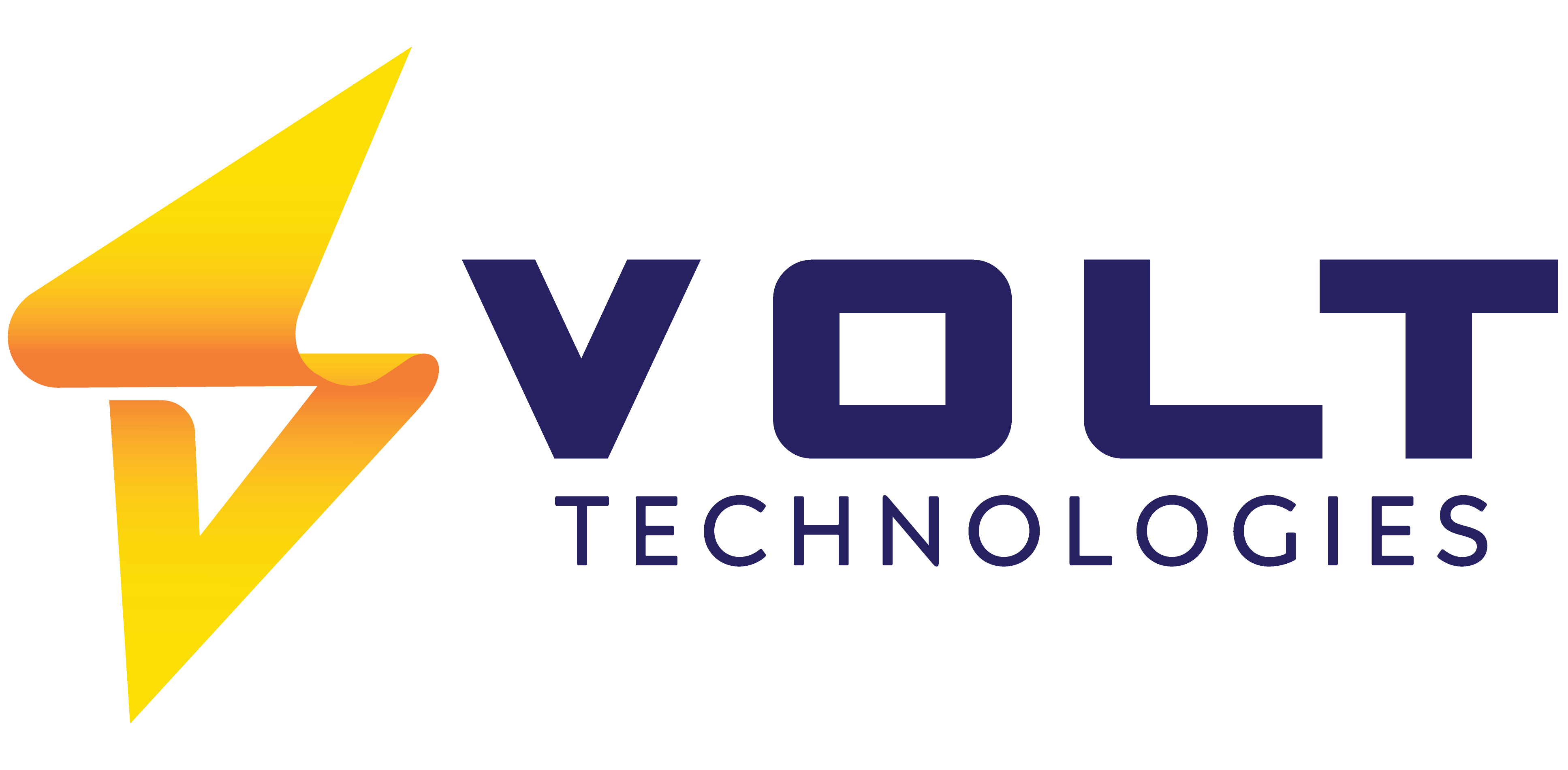6 Key ERP Implementation Best Practices


Microsoft Dynamics 365 | Simplify your IT footprint and make decisions faster.
- April 23, 2024
In this article, we’ll explore the nuances of ERP implementation, covering common pitfalls like scope creep and resistance to change, and essential best practices such as thorough planning and preparation. Join us as we navigate the path to successful ERP deployments in today’s fast-paced business environment.
Table of Contents
The Importance of ERP Systems
Enterprise Resource Planning (ERP) systems play a pivotal role in modern business operations, serving as the backbone that integrates and streamlines various functions across an organization. From finance and accounting to inventory management and customer relationship management, ERPs provide a centralized platform that enables seamless communication and data sharing across departments. By consolidating disparate processes into a unified system, ERPs enhance efficiency, visibility, and decision-making capabilities, empowering organizations to operate more effectively in today’s dynamic business environment.
A successful ERP implementation is not merely a short-term project but a strategic investment that can yield long-term benefits for a company. By taking the time to do it right the first time, organizations can set themselves up for sustained success and competitiveness in the marketplace.
Understanding Common Pitfalls
ERP implementation projects are multifaceted endeavors, often fraught with challenges that can derail progress and impede success. Here are some of the most prevalent pitfalls organizations encounter:
Exploring the common pitfalls of ERP implementation projects is crucial for business leaders aiming to maximize the success of their initiatives. It’s akin to conducting a comprehensive risk assessment before embarking on a significant business venture. While the allure of enhanced efficiency and growth prospects is enticing, it’s essential to delve into potential challenges that may arise during implementation.
Understanding these pitfalls provides business leaders with valuable insights into the risks and opportunities associated with ERP implementation. Each identified challenge presents an opportunity to proactively address potential roadblocks and mitigate risks. This proactive approach minimizes the likelihood of project delays, cost overruns, and dissatisfaction with the end result.
Moreover, exploring common pitfalls fosters a culture of informed decision-making and strategic planning within organizations. By fully grasping the intricacies of ERP implementation, business leaders can make well-informed decisions and allocate resources effectively to ensure a smoother implementation process.
In essence, fully understanding the threats and opportunities within an ERP implementation is paramount for business leaders seeking to drive organizational success. By recognizing and addressing potential challenges upfront, leaders can steer their initiatives towards achieving desired outcomes and realizing the full potential of their ERP systems.
Here are some of the most prevalent pitfalls organizations encounter when it comes to ERP implementations:
Scope Creep
Scope creep poses a significant threat to the success of ERP implementations, as it often leads to project delays, cost overruns, and dissatisfaction with the final outcome. It occurs when the project scope expands beyond its initial boundaries, introducing additional requirements, features, or deliverables that were not part of the original plan. Spotting scope creep requires vigilance and proactive monitoring throughout the implementation process. Signs of scope creep may include frequent changes to project requirements, requests for new features or functionalities, and increasing demands from stakeholders. To mitigate scope creep and maintain project alignment, organizations must employ several strategies.
Establishing clear project objectives and scope from the outset is paramount. By defining the project scope, deliverables, and success criteria upfront, organizations can minimize ambiguity and ensure stakeholders are aligned on project expectations. Additionally, creating a comprehensive project charter or scope statement can serve as a reference point for all stakeholders, providing a framework for decision-making and change control.
Implementing robust change management processes can help organizations effectively manage scope changes and prevent scope creep. This involves establishing formal procedures for evaluating and approving changes to the project scope, including assessing the impact on timelines, budgets, and resources. By requiring thorough documentation and justification for scope changes, organizations can ensure transparency and accountability throughout the process.
Regular communication and stakeholder engagement are essential for mitigating scope creep. Keeping stakeholders informed and involved in the decision-making process fosters buy-in and ownership of project scope, reducing the likelihood of unauthorized scope changes. Additionally, conducting periodic reviews and checkpoints allows organizations to assess project progress against the established scope and identify and address any deviations promptly.
Overall, mitigating scope creep requires a proactive and disciplined approach to project management. By establishing clear project objectives, implementing robust change management processes, and fostering open communication and stakeholder engagement, organizations can effectively manage scope changes and safeguard the success of their ERP implementations.
Inadequate Training
Inadequate training for end-users presents a formidable obstacle in ERP implementations, often leading to inefficiencies, decreased productivity, and frustration among employees. When users lack the necessary knowledge and skills to effectively utilize the new ERP system, the full potential of the solution remains unrealized, hampering organizational performance and hindering the achievement of strategic objectives. Spotting signs of inadequate training requires a keen understanding of user behaviors and performance metrics. Common indicators may include increased error rates, longer processing times, and frequent requests for assistance or clarification from users.
To mitigate the risks associated with inadequate training, organizations must prioritize investment in comprehensive training programs tailored to the specific needs and roles of end-users. This includes providing both initial training sessions to familiarize users with the basic functionalities of the ERP system and ongoing training opportunities to reinforce learning and address evolving needs. Additionally, offering a variety of training formats, such as instructor-led sessions, e-learning modules, and hands-on workshops, can accommodate diverse learning styles and preferences, ensuring maximum effectiveness and engagement.
Providing adequate support and resources for end-users is essential for ensuring a smooth transition to the new ERP solution. This may include establishing dedicated support channels, such as help desks or online forums, where users can seek assistance and share best practices. Additionally, appointing super-users or champions within each department to serve as internal advocates and mentors can facilitate knowledge transfer and peer support, fostering a culture of continuous learning and improvement.
By prioritizing investment in comprehensive training and support initiatives, organizations can empower their end-users to leverage the full capabilities of the ERP system, drive operational excellence, and maximize the return on investment in the solution. In doing so, they can ensure a successful ERP implementation and position themselves for long-term success in today’s competitive business landscape.
Data Migration Problems
Data migration stands as a critical juncture in ERP implementations, representing the transfer of vital organizational data into the new system. However, the process is fraught with potential pitfalls, including data corruption, loss, or inconsistency, which can profoundly impact the organization’s operations. Spotting signs of data migration problems requires a meticulous approach to data analysis and validation. Common indicators may include discrepancies between migrated data and source systems, data integrity issues, and system errors or failures during the migration process.
To mitigate the risks associated with data migration, organizations must adopt a comprehensive approach that encompasses several key strategies. Firstly, prioritizing data cleansing and validation is paramount. This involves identifying and rectifying data inconsistencies, errors, and duplications in the source data to ensure its accuracy and completeness before migration. By investing time and resources in data cleansing upfront, organizations can minimize the likelihood of data quality issues and mitigate the associated risks.
Establishing robust migration processes is essential for ensuring a smooth and seamless transition of data into the new ERP system. This includes defining clear migration objectives, mapping data fields between source and target systems, and developing detailed migration plans and schedules. Additionally, implementing data migration tools and technologies can automate and streamline the migration process, reducing the potential for human error and enhancing efficiency.
Conducting thorough testing is critical for validating the accuracy and integrity of migrated data. This involves performing data validation tests, reconciliation exercises, and data integrity checks to identify and rectify any discrepancies or anomalies. By rigorously testing the migrated data against predefined criteria, organizations can verify its accuracy and ensure that it meets the requirements of the new ERP system.
By prioritizing data cleansing and validation, establishing robust migration processes, and conducting thorough testing, organizations can mitigate the risks associated with data migration and ensure a successful ERP implementation. By taking proactive measures to address potential data migration problems, organizations can safeguard the integrity of their data and lay a solid foundation for long-term success with their ERP system.
Resistance to Change
Resistance to change stands as a formidable barrier in ERP implementations, representing the reluctance or opposition among employees to embrace new processes and technologies. This resistance often stems from fear of the unknown, concerns about job security, or discomfort with departing from familiar routines. Spotting signs of resistance to change requires attentiveness to employee attitudes, behaviors, and communication patterns. Common indicators may include increased absenteeism, decreased productivity, or vocal opposition to the ERP implementation.
To mitigate resistance to change, organizations must adopt a proactive and holistic approach to change management. Firstly, clear communication is essential for addressing employees’ concerns and building buy-in for the ERP system. Leaders must articulate the rationale behind the change, outline its benefits, and provide reassurance and support to alleviate fears and uncertainties. By fostering open and transparent communication, organizations can create a shared understanding of the need for change and cultivate a sense of ownership and commitment among employees.
Stakeholder engagement plays a pivotal role in overcoming resistance to change. Involving employees in the decision-making process and soliciting their input and feedback empowers them to shape the implementation process and feel valued and respected. Additionally, appointing change champions or ambassadors within each department can help garner support and enthusiasm for the ERP system, facilitating peer-to-peer advocacy and support.
User involvement is critical for ensuring successful adoption of the ERP system. Providing opportunities for training, education, and hands-on experience allows employees to familiarize themselves with the new system and gain confidence in using it effectively. Additionally, soliciting user feedback and incorporating it into the implementation process demonstrates responsiveness to employees’ needs and concerns, fostering a culture of collaboration and continuous improvement.
By embracing effective change management strategies, including clear communication, stakeholder engagement, and user involvement, organizations can overcome resistance to change and foster a culture of acceptance and enthusiasm towards the ERP system. By addressing employees’ concerns and providing support and resources for adaptation, organizations can pave the way for successful ERP implementations and realize the full benefits of their investment in the new system.
In conclusion, navigating the challenges posed by scope creep, inadequate training, data migration problems, and resistance to change is essential for achieving success in ERP implementations. By recognizing these common pitfalls and understanding their implications, organizations can proactively address them through a strategic approach to implementation. Now, let’s transition to discussing the best practices that organizations can employ to ensure a smooth and successful ERP implementation journey.
6 Key ERP Implementation Best Practices
1. Thorough Planning & Preparation:
Thorough planning and preparation serve as the cornerstone of successful ERP implementation projects, laying the groundwork for a smooth and effective transition. Before embarking on such a transformative endeavor, organizations must devote considerable time and effort to comprehensive planning and preparation.
This involves a multifaceted approach that encompasses various aspects of project management, including defining clear objectives, establishing realistic timelines, and allocating resources effectively. By setting clear objectives, organizations provide a roadmap for the implementation process, guiding stakeholders towards a common vision and ensuring alignment with strategic goals.
Realistic timelines are essential for managing expectations and mitigating the risk of project delays or overruns. Effective resource allocation ensures that the necessary human, financial, and technological resources are available to support the implementation effort. Additionally, conducting a thorough business process analysis is paramount for identifying key requirements and understanding the unique needs and challenges of the organization.
This analysis serves as the foundation upon which the ERP solution is built, ensuring that it addresses the organization’s pain points and delivers tangible value. By investing in thorough planning and preparation upfront, organizations can set themselves up for success and maximize the likelihood of achieving their desired outcomes with their ERP implementation.
2. Clear Communication & Stakeholder Engagement
Effective communication and stakeholder engagement are paramount for the success of any ERP implementation project. Firstly, clear and transparent communication ensures that all stakeholders are aligned with the project’s objectives and expectations. From the outset, it’s crucial to keep everyone informed about the project’s goals, timelines, and potential impacts on their roles or workflows. This level of transparency fosters trust and confidence in the project’s direction, encouraging stakeholders to actively participate and contribute to its success.
Ongoing engagement with stakeholders throughout the implementation process is essential for garnering support and buy-in. This includes not only senior management but also end-users who will directly interact with the new ERP system. By involving stakeholders in decision-making and seeking their input on key issues, organizations demonstrate their commitment to inclusivity and collaboration. This approach not only enhances the quality of decision-making but also fosters a sense of ownership and accountability among stakeholders.
Additionally, effective communication and stakeholder engagement extend beyond the implementation phase to encompass post-implementation support and maintenance. Keeping stakeholders informed about system updates, training opportunities, and ongoing improvements ensures that the benefits of the ERP system are maximized over the long term. By maintaining open lines of communication and soliciting feedback from stakeholders, organizations can continuously refine and optimize the ERP system to meet evolving business needs.
Effective communication and stakeholder engagement are essential pillars of successful ERP implementations. By prioritizing transparency, inclusivity, and ongoing dialogue, organizations can build trust, enthusiasm, and support for the project across the organization, laying the foundation for its long-term success.
3. Effective Change Management
Effective change management is crucial for navigating the challenges of ERP implementation and ensuring the smooth adoption of new processes and technologies. Firstly, organizations must proactively communicate the benefits of the new ERP system to stakeholders at all levels. By highlighting how the system will improve efficiency, streamline workflows, and support strategic objectives, organizations can garner support and enthusiasm for the change.
Additionally, providing adequate training and support is essential for helping employees adapt to the new system. This includes not only technical training on how to use the ERP software but also support in navigating changes to workflows and processes. Offering training sessions, workshops, and access to online resources can empower employees to develop the skills and confidence needed to embrace the new system effectively.
Involving employees in the change process is critical for addressing concerns and increasing acceptance. Organizations can solicit feedback, involve employees in decision-making, and create opportunities for collaboration and input. By fostering a sense of ownership and involvement, organizations can mitigate resistance to change and foster a culture of engagement and commitment.
Creating a culture of continuous learning and improvement is also key to successful change management. By encouraging employees to embrace change as an opportunity for growth and development, organizations can cultivate resilience and adaptability. Providing ongoing support, feedback, and recognition for employees’ efforts in adapting to the new system reinforces the organization’s commitment to their success.
Effective change management is essential for overcoming resistance to change and ensuring the successful adoption of ERP systems. By communicating the benefits of the new system, providing adequate training and support, involving employees in the change process, and fostering a culture of continuous learning and improvement, organizations can navigate the challenges of ERP implementation with confidence and achieve long-term success.
4. Robust Data Management
Robust data management is fundamental to the success of ERP implementation, serving as the backbone of organizational processes and decision-making. Firstly, organizations must prioritize data cleansing and organization before migration to the new ERP system. This involves identifying and rectifying inconsistencies, errors, and duplications in the source data to ensure its accuracy and completeness. By investing time and resources in data cleansing upfront, organizations can minimize the risk of data quality issues and mitigate potential disruptions during the migration process.
Establishing data governance policies is essential for ensuring the integrity and security of organizational data. This includes defining roles and responsibilities for data management, establishing data standards and guidelines, and implementing controls to enforce compliance with regulatory requirements and internal policies. By fostering a culture of accountability and transparency around data governance, organizations can safeguard the integrity of their data and instill confidence in its reliability and accuracy.
Implementing measures to ensure data accuracy, integrity, and security is critical for maintaining the trust and confidence of stakeholders. This may include implementing data validation checks, encryption protocols, and access controls to protect sensitive data from unauthorized access or manipulation. By proactively addressing data security risks and vulnerabilities, organizations can minimize the likelihood of data breaches or compliance violations and preserve the confidentiality and integrity of their data assets.
Robust data management is essential for ensuring the success of ERP implementation and maximizing the value of organizational data. By investing in data cleansing and organization, establishing data governance policies, and implementing measures to ensure data accuracy, integrity, and security, organizations can lay a solid foundation for a smooth transition to the new ERP system and drive business success in today’s data-driven world.
5. Rigorous Testing & Quality Assurance
Rigorous testing and quality assurance play a pivotal role in the success of ERP implementations, ensuring that the system meets organizational needs and functions as intended. Firstly, organizations must conduct comprehensive technical testing to validate the functionality and performance of the ERP system. This includes testing individual modules, integrations, and system interfaces to identify and resolve any technical issues or defects before deployment.
User acceptance testing is essential for validating that the ERP system meets the requirements and expectations of end-users. This involves engaging key stakeholders and end-users in testing activities to evaluate the system’s usability, functionality, and alignment with business processes. By soliciting feedback and addressing user concerns during the testing phase, organizations can ensure that the ERP system meets the diverse needs of its users and maximizes user adoption and satisfaction.
Conducting thorough testing and quality assurance activities helps organizations minimize the risk of disruptions and ensure a seamless transition to the new system. By identifying and resolving issues early in the implementation process, organizations can mitigate the impact of potential delays or downtime and maintain business continuity. Additionally, ongoing testing and quality assurance activities post-implementation help organizations identify and address any emerging issues or optimization opportunities, ensuring that the ERP system continues to meet evolving business needs and deliver maximum value over time.
Rigorous testing and quality assurance are essential components of successful ERP implementations. By conducting comprehensive technical testing, user acceptance testing, and ongoing quality assurance activities, organizations can minimize the risk of disruptions, maximize user satisfaction, and ensure the long-term success of their ERP systems.
6. Continuous Monitoring & Improvement
Continuous monitoring and improvement are essential for maximizing the value of ERP systems and ensuring their long-term success. Firstly, organizations must establish mechanisms for monitoring system performance to identify any potential issues or bottlenecks. This includes tracking key performance indicators (KPIs), system uptime, and user satisfaction metrics to gauge the overall health and effectiveness of the ERP system.
Collecting feedback from users is critical for understanding their evolving needs and experiences with the ERP system. This feedback can be gathered through surveys, focus groups, or direct communication channels and should be used to identify areas for improvement and optimization. By actively soliciting and acting upon user feedback, organizations can enhance the usability, functionality, and relevance of the ERP system to better meet the needs of its users.
Furthermore, making necessary adjustments to optimize the system over time is essential for ensuring its continued alignment with evolving business needs. This may involve implementing new features or functionalities, refining existing processes, or addressing emerging challenges and opportunities. By adopting an agile and iterative approach to system optimization, organizations can adapt quickly to changing market conditions and drive continuous innovation and growth.
Continuous monitoring and improvement are essential components of successful ERP implementations. By establishing mechanisms for monitoring system performance, collecting user feedback, and making necessary adjustments, organizations can ensure that their ERP system remains responsive to evolving business needs and continues to deliver maximum value over time. By embracing a culture of continuous improvement, organizations can position themselves for long-term success and competitiveness in today’s dynamic business environment.
Related: ERP Implementation Success: The Role of a Project Manager in Driving Change
In Conclusion
In conclusion, ERP implementation represents a transformative journey for organizations, laden with complexities and challenges. Yet, armed with the right strategies and a commitment to excellence, businesses can navigate these hurdles and emerge victorious. Thorough planning and meticulous preparation lay the foundation for success, ensuring alignment with organizational goals and effective resource allocation. Clear communication and stakeholder engagement foster buy-in and enthusiasm, while effective change management strategies empower employees to embrace the transition.
Moreover, robust data management practices safeguard the integrity and security of organizational data, underpinning informed decision-making and operational excellence. Rigorous testing and quality assurance activities validate system functionality and user acceptance, minimizing disruptions and ensuring a seamless transition. Lastly, continuous monitoring and improvement drive ongoing optimization, enabling organizations to adapt and thrive in an ever-evolving business landscape.
By embracing these best practices and heeding the lessons learned from past endeavors, organizations can unlock the full potential of their ERP systems. Through innovation, efficiency gains, and sustained growth, businesses can leverage their ERP investments to drive competitive advantage and shape the future of their industries. As the ERP landscape continues to evolve, those who remain steadfast in their pursuit of excellence will undoubtedly emerge as leaders in the digital era.
Related: Is ERP for me? A quick guide to reinventing business productivity

